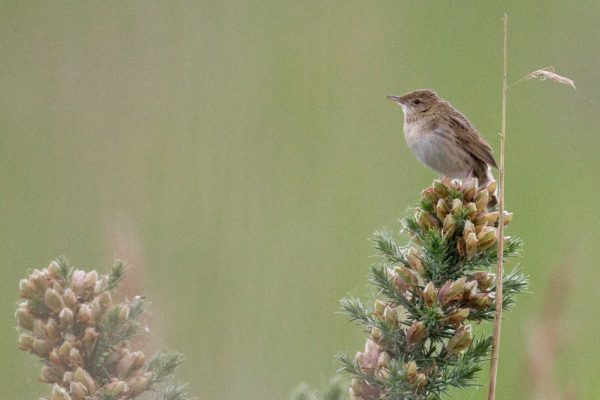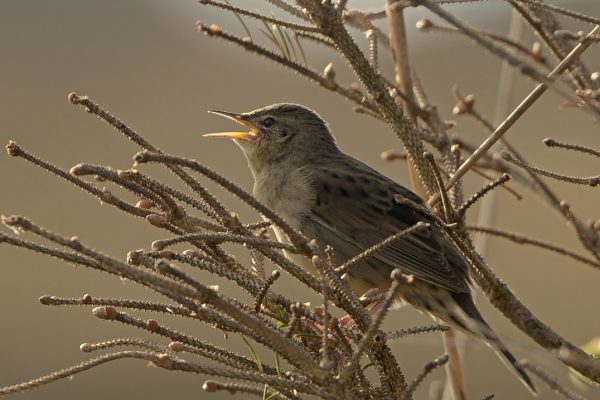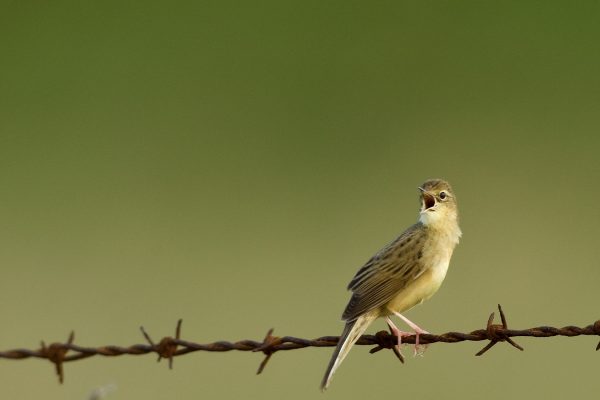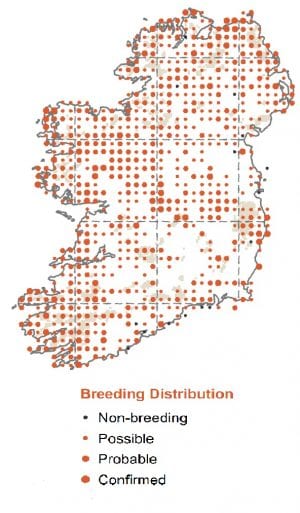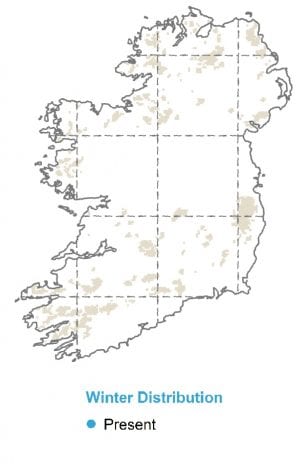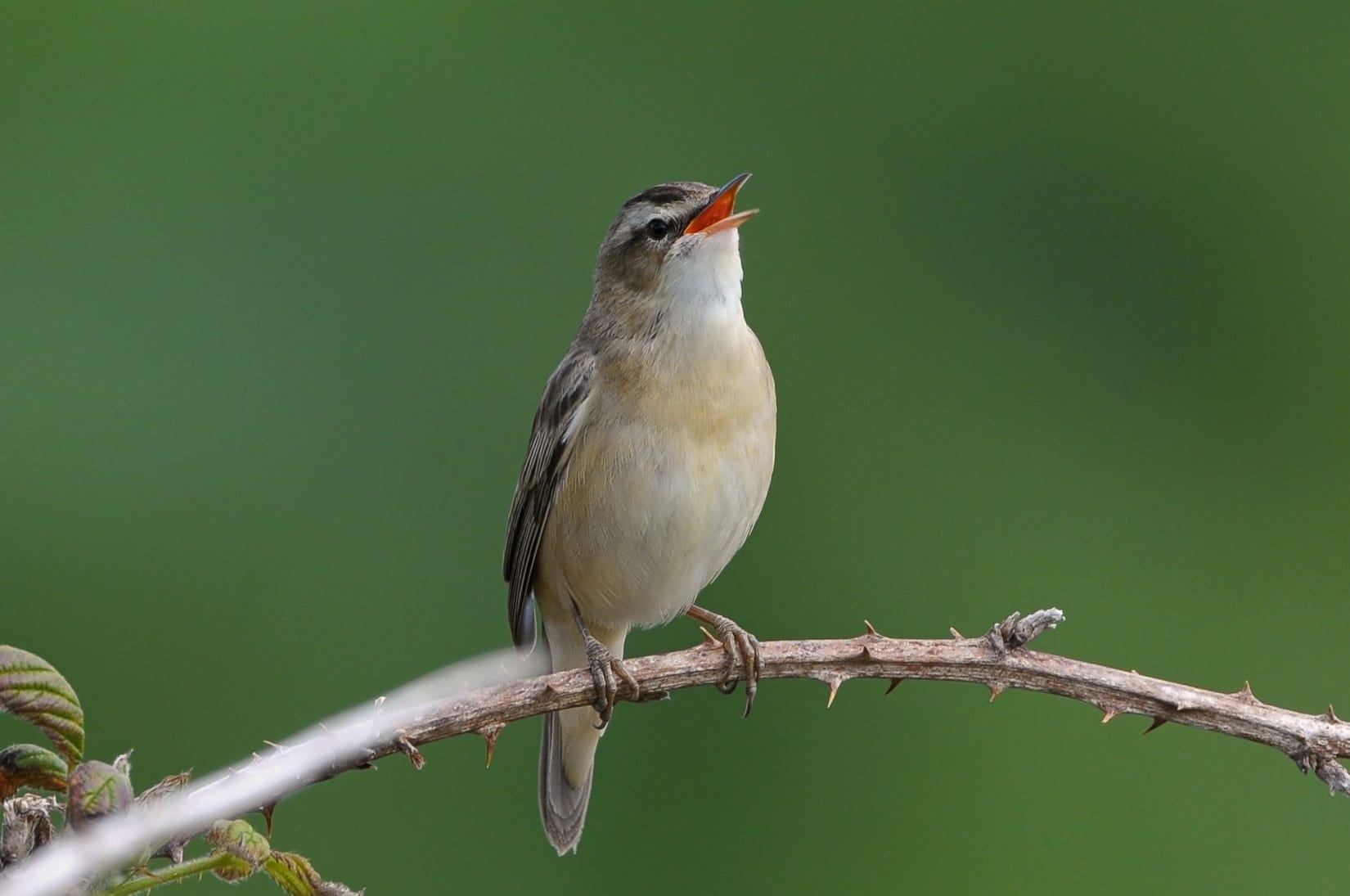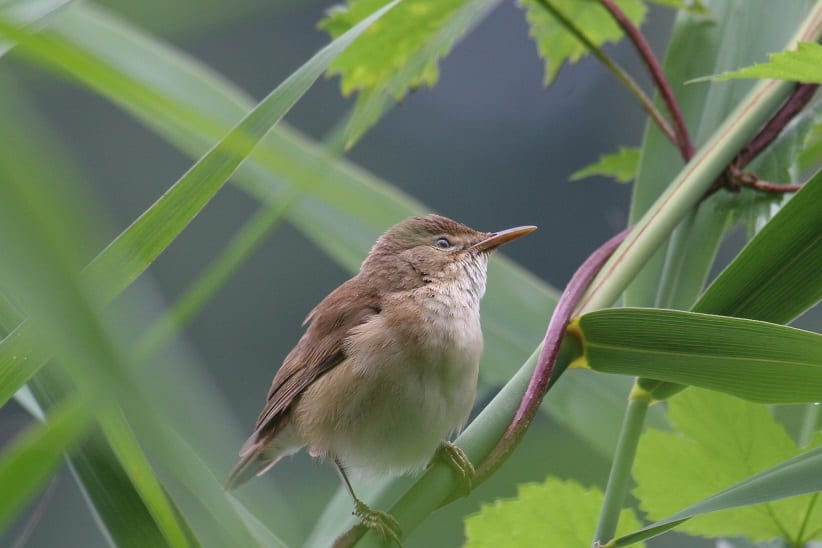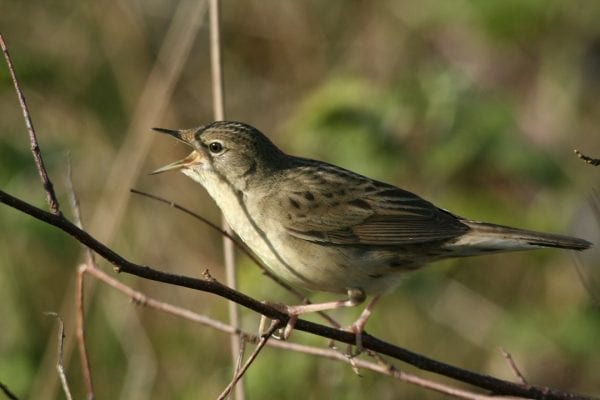
Grasshopper Warbler
| Irish Name: | Ceolaire casarnaí |
| Scientific name: | Locustella naevia |
| Bird Family: | Warblers |
green
Conservation status
Conservation status
Status
Widespread summer visitor to Ireland from April to September.
Identification
Due to its secretive habits, Grasshopper Warblers are rarely seen. About the same size as a Dunnock. Ages and sexes appear largely the same. In general, a rather non-descript beige-brown all over. Has a faint buff-coloured supercilium and white eyering. Has some dark spotting on nape and back, as well as dark centres to wing feathers. The undertail coverts are spotted black. Infrequently, Grasshopper Warblers have a strong yellowish wash to the underparts ("yellow morph").
Voice
Most calls rather infrequently heard. The song (April, May and June) is an odd mechanical reel reminiscent of a fishing line being paid out.
Diet
Grasshopper Warblers feed on insects and other invertebrates.
Breeding
Widespread but nowhere common. Grasshopper Warblers breed in a variety of marginal habitats, such as young conifer plantations, rough farmland and the edges of bogs. Very secretive and its presence is usually only noted when the male is heard singing.
Wintering
Winters in tropical west Africa.

